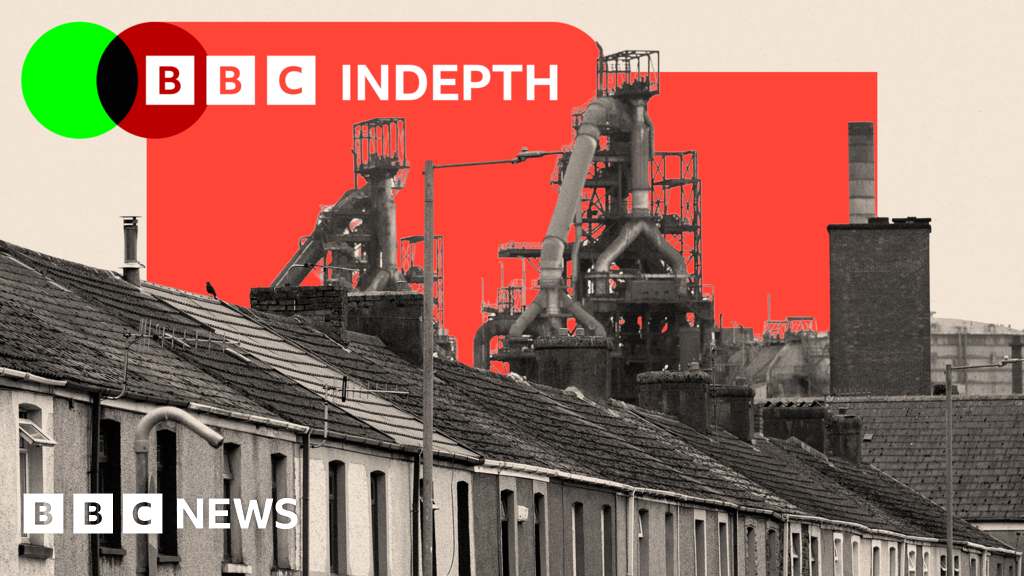Tariffs and Inflation: What the Numbers Say

Where's the Inflation from Tariffs?
The stock market is keeping a close eye on Tuesday's consumer-price index report for June, as it could shed light on the impact of tariffs on rising prices. The recent trade tensions between the US and China have led to fears of inflation, but so far the data has been inconclusive. Companies like Apple and Caterpillar have reported higher costs due to tariffs, but others like Walmart have managed to offset the impact. As we wait for the latest CPI numbers, investors are looking to earnings reports for clues on the potential impact of tariffs on the stock market.
What Stocks and Earnings Tell Us
Stocks have been relatively resilient in the face of tariffs, with the S&P 500 hitting record highs last week. This could be due to strong second-quarter earnings reports, which have shown that many companies have been able to navigate the trade tensions and maintain profitability.
About the People Mentioned
Apple
Apple Inc., formerly known as Apple Computer, Inc., is a multinational technology company founded in 1976 by Steve Jobs, Steve Wozniak, and Ronald Wayne. Initially, the company focused on personal computers, with the Apple II (1977) being one of its earliest successes. The Macintosh, introduced in 1984, was the first commercially successful personal computer to use a graphical user interface (GUI). In the 1990s, Apple faced significant challenges, including increased competition from Windows-based systems and internal leadership struggles. In 1997, Apple acquired NeXT, a company co-founded by Steve Jobs during his absence from Apple, which brought Jobs back to the company. His return marked a pivotal moment for Apple, as he introduced the iMac in 1998 and forged alliances with other companies, such as Microsoft. This period saw Apple transition from a struggling computer manufacturer to a diverse technology leader. Under Jobs' leadership, Apple introduced groundbreaking products like the iPod (2001), iPhone (2007), and iPad (2010). These innovations revolutionized the music, smartphone, and tablet markets, respectively. After Jobs' departure in 2011, Tim Cook took over as CEO and continued Apple's focus on innovation and expansion into new markets. Recent developments include the introduction of Apple TV+, Apple Arcade, and the Apple Card, as well as continued advancements in wearable technology with the Apple Watch and AirPods. Today, Apple is one of the world's most valuable companies, having surpassed a trillion-dollar valuation in 2018. The company remains a leader in consumer electronics and services, with a strong brand presence globally. Apple continues to innovate, with ongoing improvements to its product lines and the development of new technologies like augmented reality and artificial intelligence.
Caterpillar
Caterpillar Inc., founded in 1925 through the merger of Holt Manufacturing Company and C.L. Best Tractor Company, is a global leader in manufacturing heavy construction and mining equipment, diesel and natural gas engines, industrial gas turbines, and diesel-electric locomotives. The company’s origins trace back to the early 1900s when Benjamin Holt innovated by replacing wheels with continuous tracks on tractors, earning the nickname “Caterpillar” due to the machine’s crawling movement, a name trademarked in 1910. The company officially adopted the name Caterpillar Inc. in 1986. Throughout its history, Caterpillar has played a crucial role in major infrastructure projects such as the Golden Gate Bridge, Grand Coulee Dam, and Mississippi levees during the 1930s. During World War II, the company significantly contributed to the Allied war effort by producing over 50,000 track-type military tractors and diesel engines used in tanks like the Sherman M4. After the war, Caterpillar expanded globally, supplying equipment for reconstruction and development worldwide. Today, Caterpillar remains headquartered in Peoria, Illinois, and continues to dominate the heavy machinery industry. Its product range includes tractors, loaders, excavators, graders, and scrapers used in agriculture, construction, mining, logging, and industrial warehousing. The company also manufactures engines for trucks, locomotives, and power generation systems. More than half of its sales come from international markets. In 2024, Caterpillar reported sales and revenues of $64.8 billion, maintaining its position as the world’s leading manufacturer of construction and mining equipment and off-highway diesel engines. Its brand, often abbreviated as CAT, is synonymous with reliability and innovation in heavy machinery globally[1][2][3][7][9].
Walmart
Walmart, one of the world's largest retailers, was founded in 1962 by Sam Walton in Rogers, Arkansas. Initially, the company focused on serving rural areas that were underserved by major retailers, offering low prices and a wide selection of products. This strategic approach allowed Walmart to grow rapidly, expanding across the United States and eventually globally. During its early years, Walmart was known for its efficient supply chain and innovative business practices. The company went public in the 1970s and introduced its first distribution center. The 1980s saw the launch of Sam's Club, a membership-based warehouse club, and the first Walmart Supercenter, which combined retail and grocery shopping. By the 1990s, Walmart had become the largest retailer in the U.S., with sales exceeding $100 billion by 1997. Sam Walton served as CEO until 1988 and remained chairman until his death in 1992. Since then, Walmart has continued to expand globally, entering markets in Mexico, China, and Europe. Today, Walmart operates over 11,500 stores across 28 countries, employing millions of people worldwide. The company remains committed to its mission of helping people save money and live better. In recent years, Walmart has focused on digital transformation, acquiring e-commerce companies like Jet.com and investing in technology to enhance customer experience. The company has also expanded its services, offering financial services and health care options. Despite facing challenges such as competition from online retailers and criticism over labor practices, Walmart remains a dominant force in global retail, continually adapting to meet changing consumer needs.
About the Organizations Mentioned
US
The query seems to be about providing a summary of the organization "US," which could be interpreted as the United States government or a specific entity within it. However, without a clear reference to an "organization" named "US," I will provide a comprehensive overview of the United States government, focusing on its structure, history, achievements, current status, and notable aspects relevant to business and technology. ## Overview of the United States Government The United States government is a federal republic with a system divided into three branches: the legislative, executive, and judicial. This structure is designed to provide checks and balances on each branch. ## History The U.S. government was established in 1789 under the Constitution, which outlines the framework of the federal system. Over time, the government has evolved through numerous amendments and reforms, shaping policies and laws that impact various sectors, including business and technology. ## Key Achievements - **Economic Growth**: The U.S. has been a global leader in economic growth, innovation, and technological advancements, fostering a strong business environment. - **Technological Advancements**: The government has supported significant technological developments, such as the internet and space exploration, through funding and regulatory frameworks. - **Regulatory Frameworks**: Agencies like the Federal Trade Commission (FTC) and the Federal Communications Commission (FCC) play crucial roles in regulating industries and ensuring consumer protection. ## Current Status Currently, the U.S. government is engaged in various initiatives to address contemporary challenges such as climate change, cybersecurity, and healthcare reform. The government also continues to evolve its organizational structure, with ongoing discussions about the role of the executive branch, as seen in initiatives like Project 2025. ## Notable Aspects - **Project 2025**: This initiative, backed by the Heritage Foundation, aims to restructure the federal government to align with conservative ideals, potentially impacting civil rights and executive branch powers. - **Standards and Regulations**: The U.S. Standards Strategy,
China
China is not an organization but a sovereign nation and the world’s second-largest economy, playing a pivotal role in global business and technology. Since initiating economic reforms in 1978, China has transformed from a largely agrarian society into an upper-middle-income country with an average GDP growth of over 9 percent per year for decades, lifting nearly 800 million people out of poverty[2]. The country’s economic model initially focused on investment and export-oriented manufacturing but is now shifting towards higher-value services, domestic consumption, and low-carbon growth to address social, environmental, and structural challenges[2]. China’s government heavily directs industrial policy, promoting domestic innovation and technological self-reliance through plans like “Made in China 2025” and the 14th Five Year Plan (2021-2025). These initiatives target advanced technology sectors such as robotics, aerospace, new energy vehicles, biopharmaceuticals, and high-tech manufacturing, aiming to replace foreign technologies with domestic alternatives and expand China’s global market presence[3]. This industrial strategy combines state subsidies, preferential policies, and strict market access controls for foreign firms, shaping a competitive environment favoring national champions[3]. Despite solid economic growth—real GDP grew by 5.4% year-on-year in early 2025—China faces headwinds including demographic shifts, slowing productivity, a cooling property market, and global trade uncertainties. Growth is projected to moderate to around 4.5% in 2025 and 4.0% in 2026, with fiscal stimulus helping to offset some challenges[1][3][6]. Externally, China remains a major global exporter, with exports outpacing GDP growth in 2025[6]. Notably, China’s governance under President Xi Jinping has tightened control over civil society, media, and minority regions, drawing international scrutiny for human rights issues and repression, especially of Uyghurs and Tibetans[4][9]. Meanwhile, Chin
S&P 500
The S&P 500, officially known as the Standard & Poor’s 500, is a revered stock market index tracking the performance of 500 of the largest publicly traded companies in the United States[1]. Managed by S&P Dow Jones Indices—a joint venture majority-owned by S&P Global—the S&P 500 is widely recognized as a leading barometer of the U.S. stock market and, by extension, the broader economy[1][7]. It accounts for roughly 80% of the total market capitalization of U.S. public companies, with an aggregate value exceeding $57 trillion as of August 2025[1]. The index is weighted by market capitalization, meaning larger companies exert a greater influence on its movements[1][2]. Its top holdings include tech giants like Nvidia, Microsoft, Apple, and Alphabet, which together represent a significant portion of the index’s total value[1]. ## History and Evolution The S&P 500 traces its origins to 1923, when the Standard Statistics Company (later becoming Standard & Poor’s) launched an index of 233 companies[3]. In 1957, it expanded to include approximately 500 companies, formalizing the structure familiar today[3]. Over the decades, the index has evolved into a cornerstone of global finance, reflecting the dynamism of the U.S. economy and the rise of sectors like technology, healthcare, and consumer goods. ## Purpose and Impact The S&P 500 serves multiple critical roles: it is a benchmark for investment portfolios, a basis for passive index funds and ETFs, and a key input for economic forecasting tools like the Conference Board Leading Economic Index[1][6]. For companies, inclusion in the S&P 500 is prestigious and financially impactful, often triggering significant buying activity as funds tracking the index adjust their holdings[2]. For investors, the index offers a convenient, diversified exposure to the U.S. equity market through index funds and ETFs[4









